Historic downtown Superior building gets detailed restoration
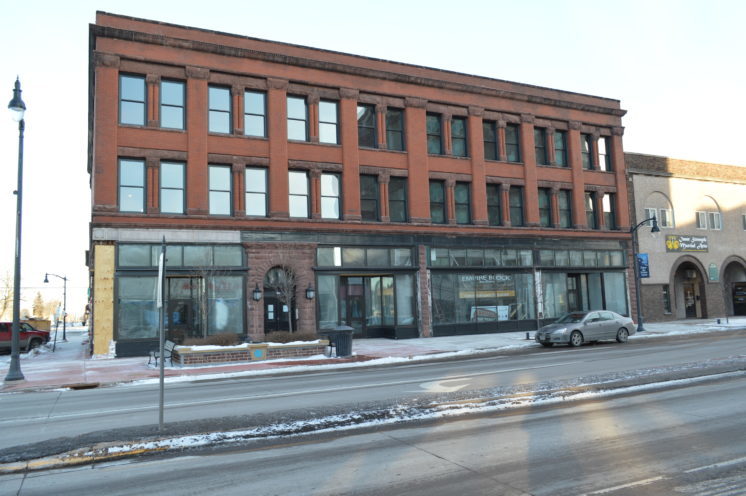
The Empire Block opened in 1892 on Tower Avenue in the heart of downtown Superior. Newly restored apartments will be open for showing in February.
A meticulous, top-to-bottom restoration of a massive 19th Century building in downtown Superior will offer jaw-dropping views for new residents, historic charm for new businesses and a boost to city center redevelopment efforts.
The $6 million, three-year Empire Block renovation project is nearing completion and management will begin residential property showings in February. The three-story building at 1202-1208 Tower Ave. features 15 market-rate apartments on two upper floors and three street-level commercial spaces.
The project is the biggest historic commercial building restoration ever completed in Superior.
“There are a couple of things that make this project so unique and so great for the city,” said Mayor Jim Paine. “Not only are they restoring a historic building, bringing it back to life, but they are doing it in a way that combines both residential and retail uses, the original uses for the building.”
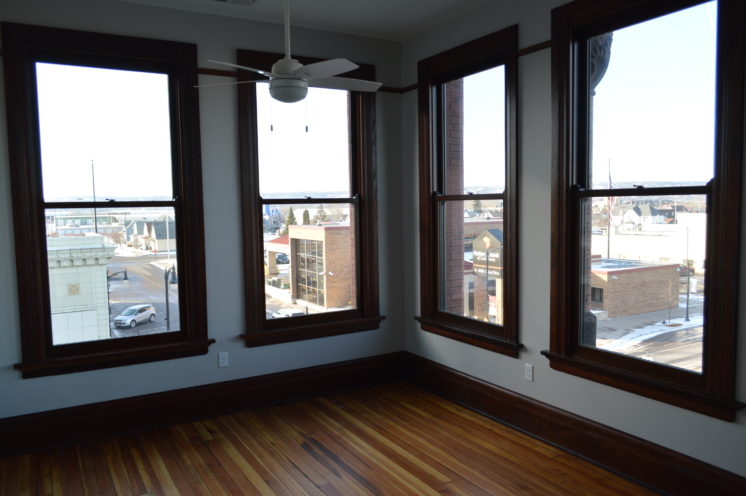
The upper two floors of the Empire Block building feature 15 apartments. This one looks across St. Louis Bay at Duluth’s hillside.
Paine said the project takes advantage of new redevelopment trends happening in cities all over the county. He said people want to live in urban centers so they can sleep, eat, work and find entertainment all in one place.
“That’s what downtowns are supposed to do,” he said. “The Empire Block does exactly what it was designed for all those years ago. It is downtown living with great views, easy access to transportation, great shops and restaurants nearby all in a historic structure.”
The city of Superior liked the project so much it authorized a $200,000 grant from its economic development fund in 2015. The project also earned a $250,000 grant from the state of Wisconsin in 2016 and secured state and federal tax credits targeting historic preservation.
Empire Block LLC managing member Mark Hubbard said the project was a highly coordinated and detailed effort between the state of Wisconsin, city of Superior and the Douglas County Historical Society.
“It’s been a long project,” he said. “We’ve been jumping through hoops for three years but that’s what it takes if you want to do it right.”
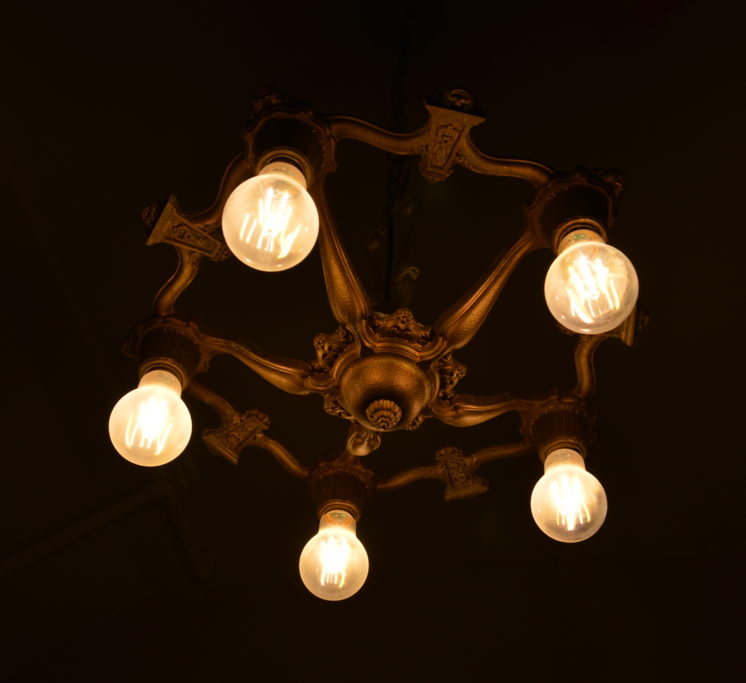
Light fixtures, stairway banisters, doors and cabinet work were all part of the building restoration.
On a recent building tour, Hubbard pointed out countless detail work directed by state building historians during the restoration process. Contractors installed custom-made double-hung windows based on original designs, created false hallway doors that matched original floor plans, and removed, reconditioned and reinstalled trim to its exact placement.
Hubbard and his crew saved and restored built-in wall cabinets, light fixtures and building details like pillars, railings and banisters. A metal fire escape will be reused as the base for three apartment balconies, 11 skylights were made to a historic design and 15-foot-high metal ceilings were uncovered in lower-level commercial space.
Superior architect Carl Wirth designed the building, which opened in 1892. It originally housed a hardware store, a grocery store and a pharmacist on the street level. The second floor had mixed living space with professional offices. The third floor offered residential quarters including a boarding house.
The Empire Block was listed on the National Register of Historic Places in 1985. The state followed with a similar designation in 1989.
According to the National Register filing, the Romanesque Revival style building was financed by a land speculating firm that included Franklin Billings, a former Vermont governor; O.P.C. Billings of New York, and Superior businessmen Edward Bailey and F.W. Downer. “The Empire Block is a significant example of the unrestrained exuberance that marked the late 19th Century boom period in Superior,” the filing reads.
Newspaper archives show fire damaged the building in 1904 and 1914.
More recently, the Empire Block was the longtime home of Lurye Furniture, which closed prior to the 2013 Tower Avenue reconstruction project. The upper residential levels had been abandoned since 1984, said Hubbard, when it was used as housing for university students.
“It was like a neutron bomb went off,” said Hubbard. “There were all kinds of personal items still up here, clothes, food, records — it took weeks to clean it all out.”
After spending more than a year on financing, design work and historic documentation, Empire Block LLC started reconstruction in February of last year.
Hubbard said the project has averaged 31 full-time weekly workers and all but two contractors have been local. “That’s a lot of manpower,” he said. “It’s been a very labor intensive project.”
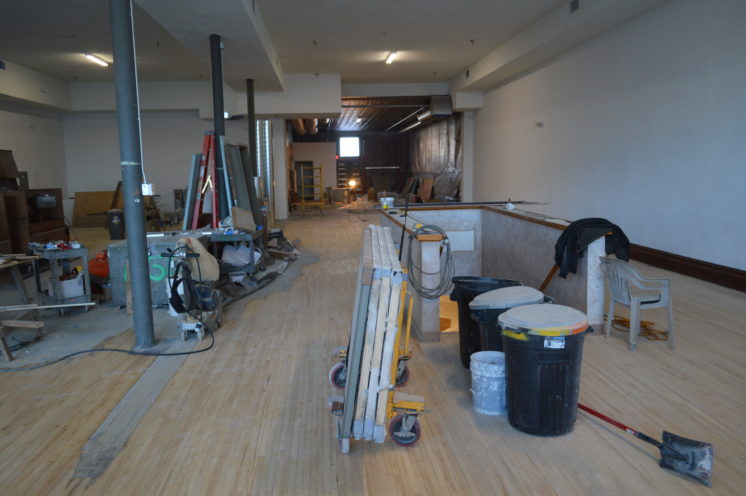
The Empire Block building features three commercial spaces at street level. A coffee shop and attorney have leased two of the units.
For example, trim was pulled from each room, numbered, placed in metal containers and transported across the parking lot to TW Wood Design. The Ogden Avenue wood shop reconditioned each piece and workers reinstalled much of the trim back in its original location.
In addition to the detailed historic restoration work, the project installed a modern heating and air condition system and building security, added an elevator off the back, created 46 off-street parking spaces and an all-new floor plan to accommodate the 15 apartments.
“We have 15 apartments and 15 different designs, not one of them is the same,” said Hubbard. Smaller, single bedroom apartments will rent from $1,050 with the large, upper-floor three-bedroom apartment renting for $2,200 a month.
Empire Coffee and an attorney have leased two of the three street-level commercial spaces. Hubbard said he is still looking to place a tenant in the last and largest storefront.
The Douglas County Historical Society coordinated historic preservation efforts serving as a conduit for tax credits between Empire Block LLC and its banking partners. Douglas County Historical Society Treasurer Jon Winter said he was excited to see the project nearing completion.
“We’re very happy, very pleased with the way it turned out,” he said. “We’ve taken an old building — a cornerstone of Superior history — and had it redone, returning it to its former glory. It looks fantastic.”
Hubbard, a retired chief financial officer and senior vice president at Lakehead Construction, said the project is part of improving the city of Superior and making it a more attractive place to live. The city recently went more than two decades with no new apartment construction.
“My kids came up with this idea. They wanted to see if we could do something downtown.” he said. “I thought it sounded like an interesting project and here we are.”
Recommended Links:
Leave a Comment
Only registered members can post a comment , Login / Register Here




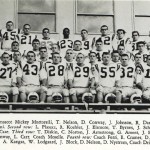









No Comments